SSC Looks ahead—by the Commander, Space Systems Command, Los Angeles Air Force Base
As the primary acquisition hub of the U.S. Space Force (USSF), Space Systems Command (SSC) provides the critical capabilities our Nation’s joint warfighters depend on—today and into the future. These capabilities are critical to the joint force and the American way of life. The average citizen’s reliance on space—from the GPS signals in their cars to ATM machines to modern agriculture—is woven into almost every aspect of our lives.
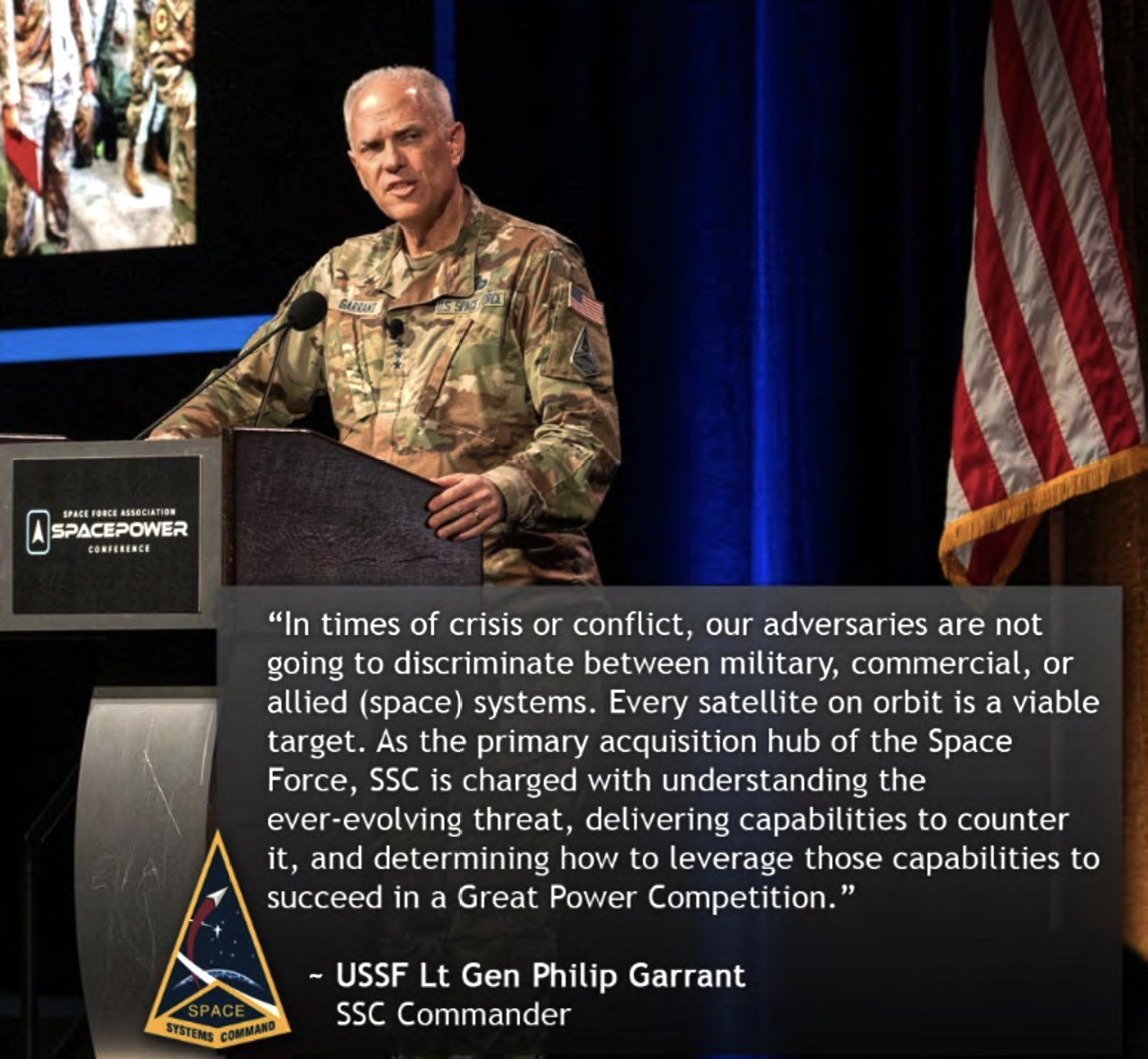 At least half of the U.S.’s critical infrastructure depends on space. In modern warfare, without space, kill chains don’t close, our strategic advantage evaporates and we lose. Our adversaries understand the importance of space power, and they are ready and willing to take it from us.
At least half of the U.S.’s critical infrastructure depends on space. In modern warfare, without space, kill chains don’t close, our strategic advantage evaporates and we lose. Our adversaries understand the importance of space power, and they are ready and willing to take it from us.
This is why the Space Force exists. Space is our responsibility, and we must contest and control the domain to ensure freedom of action.
China and Russia continue to heavily invest in counterspace capabilities with the intent to present a serious threat to U.S. national security interests in, from, and to space. These threats are no longer emerging —they’re here.
And in times of crisis or conflict, our adversaries are not going to discriminate between military, commercial or allied systems. So it’s not just military space capabilities at risk: every person and every satellite on-orbit is a viable target.
The Space Force and SSC are working hard to stay ahead of the ever-evolving threat; developing counter-threat capabilities and determining how to leverage those capabilities to succeed in today’s Great Power competition.
SSC is not alone in this effort—the rapid rise in commercial proliferation, increased allied partnership in space, and growth in the space technology sector all contribute to our success today and into the future. Contributions from across the space community help to ensure the U.S. maintains our superiority over the ever-changing space domain and outpaces our near-peer adversaries.
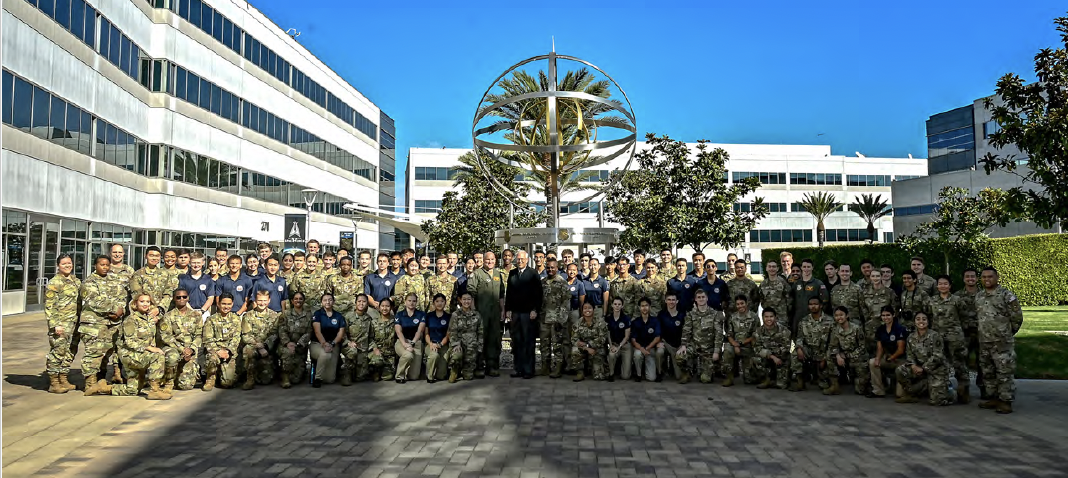
The strength of SSC... the personnel of Space Systems Command.
What’s Next?
Now in our fourth year, we continue to refine what a field command for an acquisition organization looks like and how it most effectively operates. We’re continuing to align our priorities and resources. And we’re taking bold new steps to develop an expert workforce focused on delivering game-changing capabilities.
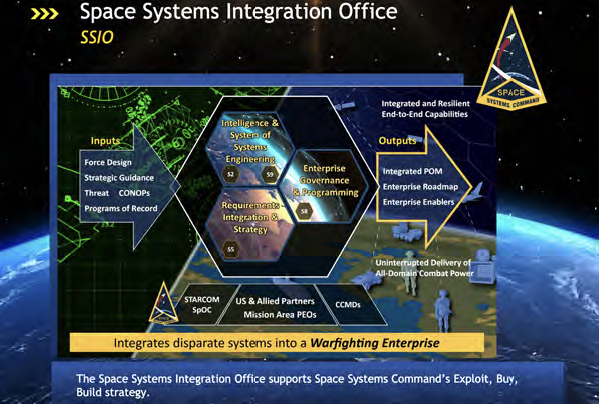 SSC’s command plan emphasizes the need for a culture where our people are driven by a warfighting mindset focused on the threat. This means our experts are biased towards action and speed; fueled by a sense of personal and professional accountability, and never settling for ‘good enough.’
SSC’s command plan emphasizes the need for a culture where our people are driven by a warfighting mindset focused on the threat. This means our experts are biased towards action and speed; fueled by a sense of personal and professional accountability, and never settling for ‘good enough.’
SSC now consists of six capabilities-based program executive offices, a Space Systems Integration Office, an International Affairs Office, a Commercial Space Office and a Warfighting Integration Office. I recently released a command plan that shifts our strategic focus on how we organize, train and equip the SSC workforce to enable the program executive offices and acquisitions teams to out-deliver our adversaries. Collaboration is key to our achieving technical, operational, and acquisitions excellence.
Deepening Our Connection With Stakeholders
We’re seeing a lot of great ideas from small and emerging space industry companies and SSC has developed numerous ways to make certain those companies have an easier time developing partnerships with us. Working with government and the military can often seem daunting, particularly if a new company has never worked with us before or doesn’t know how to navigate the process.
 Our Commercial Space Office, which includes Front Door, SpaceWERX, Commercial Marketplace, Commercial Satellite Communications Office, Commercial Collaboration Center (COSMIC) and the Commercial Augmented Space Reserve (CASR) exists to accelerate these commercial partnerships and cut through the red tape to deliver capabilities aligned with warfighter needs by connecting the right business with the right space agency, and the right capabilities.
Our Commercial Space Office, which includes Front Door, SpaceWERX, Commercial Marketplace, Commercial Satellite Communications Office, Commercial Collaboration Center (COSMIC) and the Commercial Augmented Space Reserve (CASR) exists to accelerate these commercial partnerships and cut through the red tape to deliver capabilities aligned with warfighter needs by connecting the right business with the right space agency, and the right capabilities.
Over the last year, we held eight industry days, each focusing on different space capabilities, learning from commercial space industry what is possible, and discussing what capabilities our warfighters need now.
Delivering Combat-Credible, Ready, and Resilient Capabilities
Our launch tempo continues to grow. We put 141 launches in orbit from our Eastern and Western ranges in 2024. That is 100 more launches than just three years ago.
Of our 2024 launches, four were National Security Space Launches —our can’t-fail missions that provide essential space capabilities for national security.
Another four were Rocket System Launch Programs (RSLP). These provide suborbital launch capabilities for various DoD (Department of Defense) (DoD) programs, including experimental payloads that are paving the way for exciting new future capabilities.
More than 80 percent of our launches are commercial satellites, so we’re ensuring we have resilient and ready spaceports. Not only are they beneficial to the U.S. economy, but they also provide us with plenty of launch opportunities for our critical space assets.
The DoD-led satellite launches managed by SSC and its predecessors have not experienced a launch failure for nearly a quarter of a century. We take great pride in that.
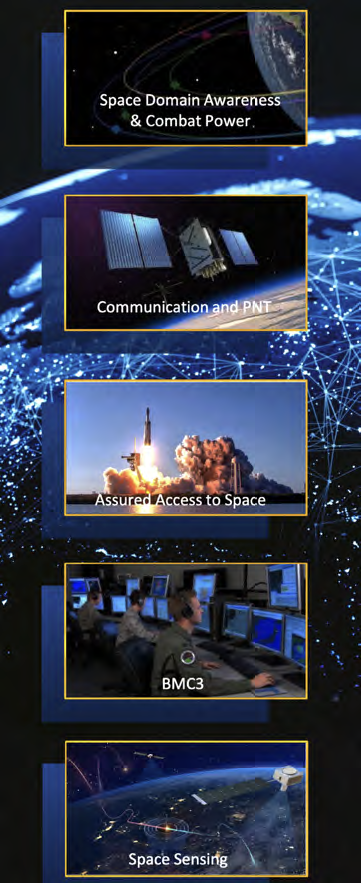 Using information gathered through an existing industry partnership, they and their team developed a baseline of normal activity to identify areas where protests or unrest would likely begin. The team’s average response time from time-of-seen activity to report delivery was just five and a half hours, with their fastest time clocking in at 90 minutes. These initiatives are pushing the boundaries of what we thought was possible with rapid response.
Using information gathered through an existing industry partnership, they and their team developed a baseline of normal activity to identify areas where protests or unrest would likely begin. The team’s average response time from time-of-seen activity to report delivery was just five and a half hours, with their fastest time clocking in at 90 minutes. These initiatives are pushing the boundaries of what we thought was possible with rapid response.
Our Tactically Responsive Space Program, (TacRS) is another SSC team focused on outpacing the threat. We made history in 2024 with our Victus Nox mission, in which we demonstrated SSC’s ability to rapidly mate a satellite to a rocket and launch in an unprecedented timeline, proving we can rapidly respond to threatening on-orbit behavior. In December, we demonstrated how commercial synergy also enhances resilience and responsiveness for our national security missions, launching high-value military and intelligence satellites. Our Rapid Response Trailblazer (RRT-1) mission—a U.S. national security space launch—used military capabilities to condense a typical two-year mission planning cycle to less than six months.
Next will be our follow-on TacRS project, SSC Imagery, which challenges us and industry to collaborate on delivering tactically responsive space capabilities. This program accelerates our ability to characterize adversary aggression and respond to it.
The TacRS team is charged with leaning forward and taking educated risks to deliver effects for space superiority. They’ve cultivated strong partnerships with combatant commands, operations teams, and innovative organizations such as the Defense Innovation Unit (DIU) and SpaceWERX to move their solutions forward as flexible and responsive options that meet warfighter needs.
Another team making a big impact is our Tactical Surveillance, Reconnaissance and Tracking Team (TacSRT). They continue to revolutionize traditional acquisition and contracting timelines through streamlining processes and use of the global data marketplace. Through these innovative solutions and partnerships with industry, the TacSRT team today can deliver decision-making information to combatant commanders in under 72 hours.
Two members of that team, Capt. Travis Osborn and Capt. McKenna Medina, directly contributed to the U.S. military withdrawal from Air Base 201 in Agadez, Niger, last summer.
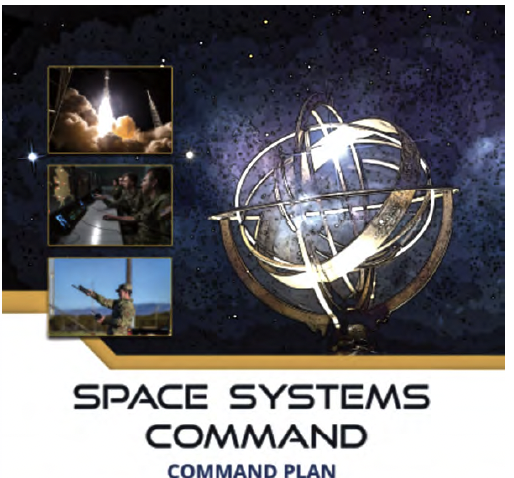 Second, the Quasi-Zenith Satellite system-hosted payload program (QZSS-HP), with Japan.
Second, the Quasi-Zenith Satellite system-hosted payload program (QZSS-HP), with Japan.
Partnering With Our Allies
In our historically complex space environment, it’s essential that we have a joint force mindset and maximize all opportunities to partner in order to be successful. There is significant value in engaging with our international partners.
Our Nation’s integrated deterrence strategy requires robust collaboration and information sharing with our allies, as demonstrated by two recent success stories; both which serve as models for future opportunities with allied partners.
First, our Enhanced Polar System - Recapitalization (EPS-R) partnership with Space Norway. We partnered with Space Norway to launch two EPS-R satellites in August, marking the first time a DoD operational payload was hosted on an international satellite. The result is enabling secure, 24/7 protected SATCOM capability within the north polar region, and approximately $900 million in savings for the U.S. government.
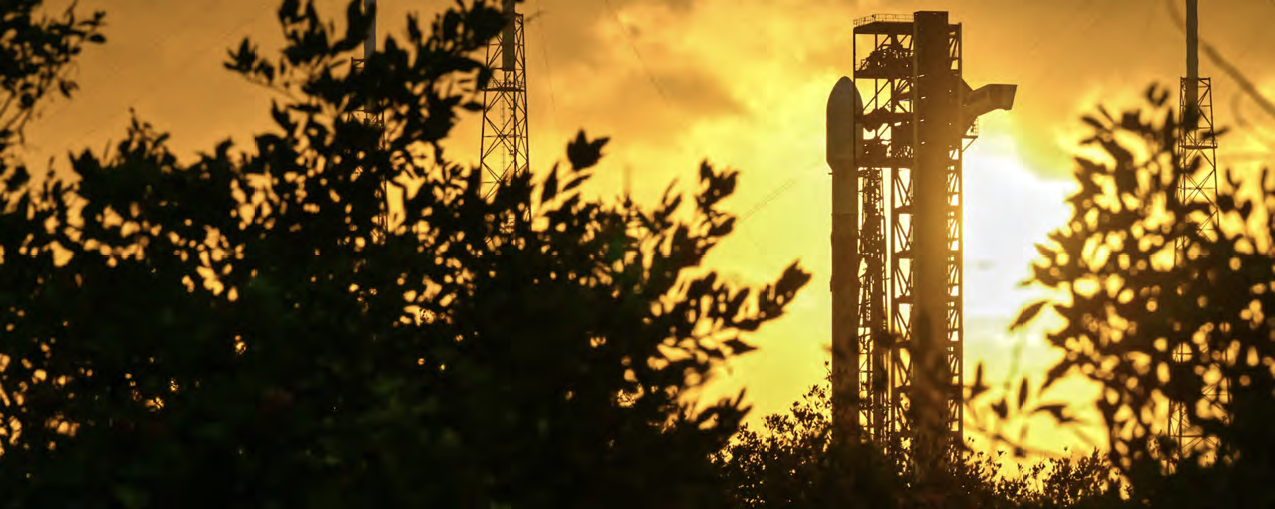
SSC National Security Launch: GPS III Expedited Launch
With QZSS-HP, as proliferation of both friendly and adversary-based systems in geosynchronous orbit increases, our innovative approach will deliver much-needed space domain awareness capability and while diversifying our presence in GEO.
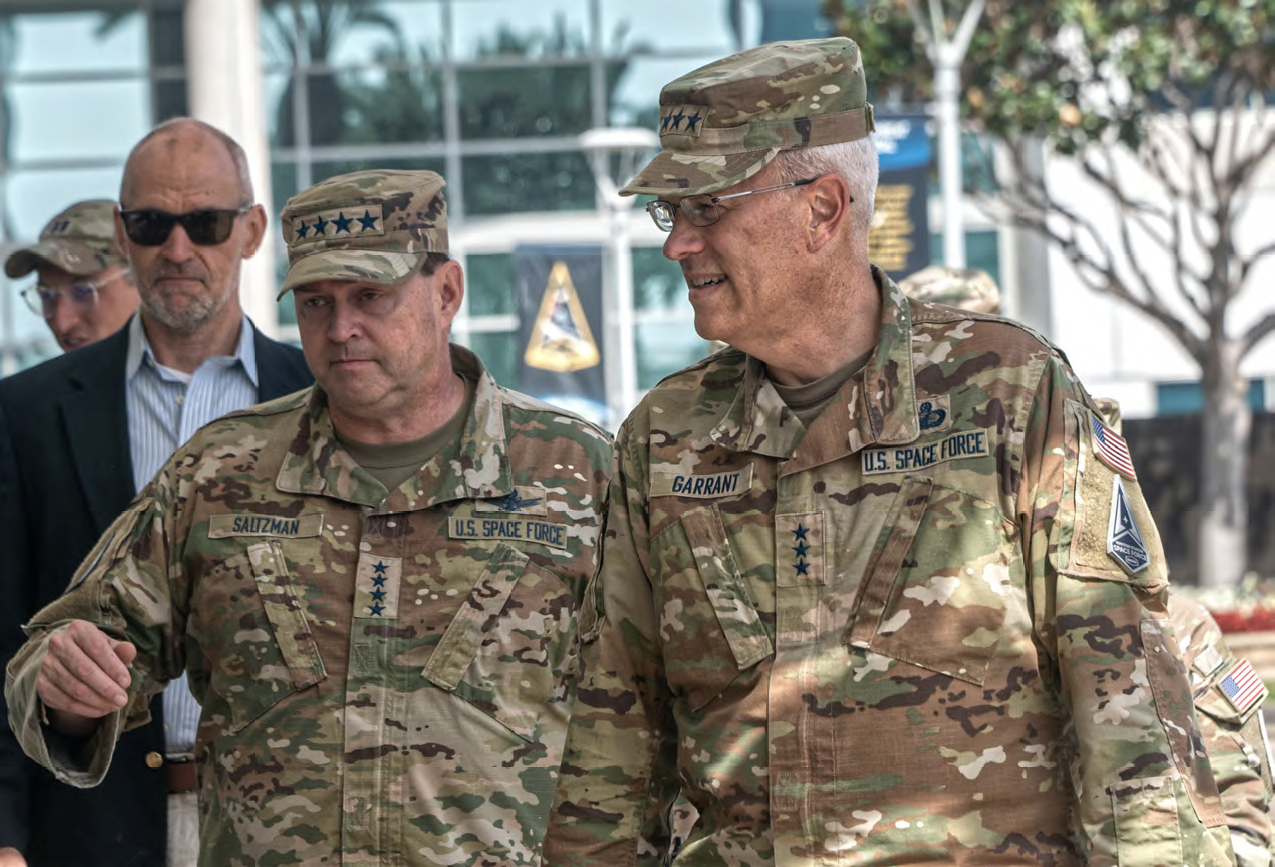
Lt. Gen. Garrant, SSC commander, (right)
meets with Gen. Chance B. Saltzman,
Chief of Space Operations, U.S. Space
Force at Los Angeles Air Force Base
2025 & Beyond
Space is now a warfighting domain, and we support the Space Force in a solemn responsibility to defend our space-based capabilities. I am proud and excited to share the many exciting SSC programs scheduled for completion this year. One is Next-Generation Operational Control system (OCX), the command-and-control component of next generation GPS. Another is our Military GPS User Equipment Program (MGUE) Increment 1, which will modernize military GPS receivers, delivering accurate and reliable positioning, navigation, and timing to U.S. and allied users where current receiver performance may be compromised or unavailable.
We’re also looking forward to adding to our Wideband Global SATCOM (WGS) constellation, which serves as the backbone for U.S. military global satellite communications.
Our Assured Access to Space organization also will be moving ahead with its NSSL Phase 3, which is designed to strengthen the commercial space industrial base by adding a third launch provider to our NSSL program and providing on-ramps for new and emerging providers for more risk-tolerant missions.
Space Force will also be launching Space Futures Command, its fourth field command, to help us analyze the threat environment, test new concepts, and perform mission design to better align with what the joint force needs.
Our military, our Nation and our allies rely on SSC’s ability to deliver space-based capabilities that protect our Nation, enable our critical infrastructures, and fuel our economy.
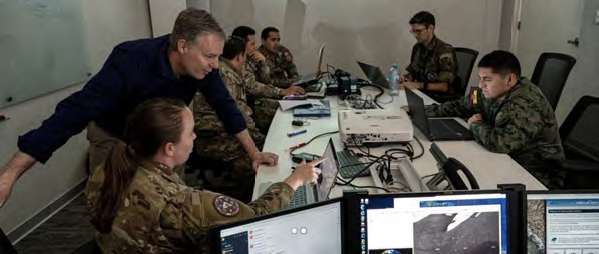
1st Lt. McKenna Medina and Joseph Gerber,
JCO Integration, discuss updates to the
Illegal Fishing Operational Planning
Products during daily operations.
Photo credit: SSgt, Matthew Matlock
We are committed to organizing, training and equipping a workforce that fields threat-informed capabilities.
And we are committed to delivering combat-credible effects to continue our foundation for enduring dominance and competitive advantage.
We may not be able to predict what the future will hold, but we can assert that the men and women of SSC are ready, resilient, and eager to meet all of the coming challenges.
As we begin a new year in the Great Power Competition, I continue to encourage current and potential industry partners and allies to connect with us.
We need to hear and understand your suggestions and your challenges. SSC’s Front Door is open to facilitate these vital discussions. Semper Supra! —Lt. Gen. Philip Garrant, Commander
Contact Space Systems Command at
SSC@spaceforce.mil follow on LinkedIn.

